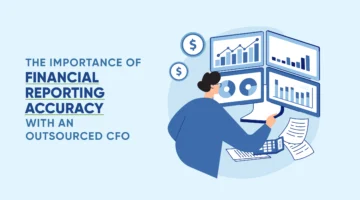Maintaining and Boosting Profit Margin During Growth
Maintaining and Boosting Profit
Despite the economic challenges that the past couple of years have brought, the economy is recovering. Two years ago, many businesses found themselves needing to pivot in order to stay afloat during the rise of the COVID-19 pandemic, but now, many find themselves in positions of unprecedented growth. Unemployment is at an all-time low, and businesses have maintained a high level of activity and spending. If your company finds itself in a position of growth, first congratulate yourself for reaping the benefits of a great deal of hard work! Then, you may want to consider revisiting your profit margin to ensure your business is able to support its growth. A good profit margin is key to sustaining the total cost of long-term objectives. Here, we’ll suggest some checkpoints to review, especially as you head into 2023 and create new goals for your organization.
Understanding Profit Margin
First things first—what is your profit margin, and why is it so important? Profit margin informs the profitability of a product or service. It’s calculated by dividing profit by revenue, meaning it’s expressed as a percentage. The higher the percentage, the more profit a business makes relative to its costs. Profit margin is one measure to determine an organization’s financial health. If, for example, a company has high revenue but a low profit margin, they may not be able to sustain growth or reinvest their profits into company initiatives. A profit margin that’s considered ideal will vary based on your business’ industry. For instance, it’s typical for restaurants to have lower profit margins, and pharmaceutical companies to have very high margins.
Closely monitoring profit margins can both help you to fund projects that support organizational objectives as well as to identify red flags within your pricing. Many companies put all of their effort into increasing sales, not realizing that focusing on improving profit margin can cause the business to make more from every dollar of gross revenue.
Improving your Profit Margin
Again, the ideal profit margin will vary from industry to industry. Below are general tips to keep in mind while monitoring and trying to impact profit margins. If you’re unsure of where to begin, haven’t evaluated profit margins or pricing models, or don’t know where to focus your efforts, hiring someone from a fractional consulting group is a good place to start. A fractional consultant can evaluate your margin and make tailored recommendations based on your business size, type, and industry. This is especially useful if you don’t have a full-time accounting staff or someone in an advising position to help make decisions based on financials. A fractional consulting group can provide valuable insight without needing to invest in a full-time hire. With that being said, we recommend the following general guidelines.
Take a Deep Dive into your Strategies
To be able to increase profit margin, you have to adapt and optimize your business’ processes. And, of course, you can’t do that unless you know exactly what those processes are and the impact they have on your business. Set aside time to take a comprehensive look at how your money is being spent, how your product is being made, and what your hiring and retention strategies are. Similarly, identify any other factors that impact your revenue generation or production costs. From there, you can move forward to make a plan with increased visibility.
Create a Budget for your Cost of Sales
Within your deep dive, pay especially close attention to your business’ cost of sales, be it for a product or service. The cost of sales entails every expense that goes into making your product or providing your service. By looking at your cost of sale over the last several months, you can create a budget to use for a guideline as to what typical spending levels should be. As your business grows, be sure to not exceed the budget for your cost of sales, as this could lower your margin. On the other hand, be mindful of not lowering your cost of sales too much either, as this could compromise the quality you provide to your clients.
Identify Areas to Reduce Operating Costs
There are a few different profit margins you can use to evaluate your business’ financial health, one of them being an operating profit margin. (The other two are gross and net profit margin.) Your operating profit margin looks specifically at the effects of indirect costs that impact the bottom line and evaluates how well you manage those costs. These can include marketing costs, administrative expenses, depreciation, research and development, and more.
One effective way to improve profit margins is to streamline these indirect costs. This could mean outsourcing or using fractional services for positions that don’t require full-time staff, switching to a remote workforce to save on office space costs, tightening budgets for departments, and limiting unnecessary or unmonitored spending. (When, for example, was the last time you checked to ensure you weren’t paying for an old subscription?)
Strategically Increase Prices
Increasing prices is a seemingly simple way to also boost profit margin. However, you have to do so strategically as to not alienate your customer base or put your sales at risk. Niche services and products don’t run as much of a risk of being undercut by competitors, but this isn’t often the case for business owners.
Take a look at your pricing model and conduct a market analysis of similar product and service offerings. Pricing models can be tricky to navigate, but taking a comparative approach and seeking out additional guidance can help.
Boost Brand Loyalty
Finally, one of the best ways to take care of your profit margins particularly in times of growth, is to focus your effort on client retention. It’s no secret that retention is far less expensive that acquisition. By providing excellent service, a unique product, or offering optimal buyer experience from start to end, you can retain your client base. Happy clients are not only willing to pay slightly more for a good product or service, but are also willing to refer others to your business.
Take time now to create a strategic plan for your business’ profit margins, and reap the benefits in the new year!
Get Your Free Consultation
Gain Financial Visibility Into Your Business
We provide outsourced CFO, fractional CFO, and temporary CFO, Controller, Audit Preparation and operational Accounting services that suit the needs of your business.
- Hourly Rates
- No Hidden Fees
- No Long Term Requirements
NOW CFO provides the highest level of expertise in finance and operational accounting to accelerate results and achieve strategic objectives for sustainable growth and success.
After completing the form, a NOW CFO Account Executive will reach out and learn more about your needs so that we can pair you with the right Partner.
Learn More: Revenue vs Profit



